 The content of this project information sheet falls under the sole responsibility of the AFD and does not necessarily reflect the opinions of the European Union.
The content of this project information sheet falls under the sole responsibility of the AFD and does not necessarily reflect the opinions of the European Union.This project is carried out with the support of the European Union
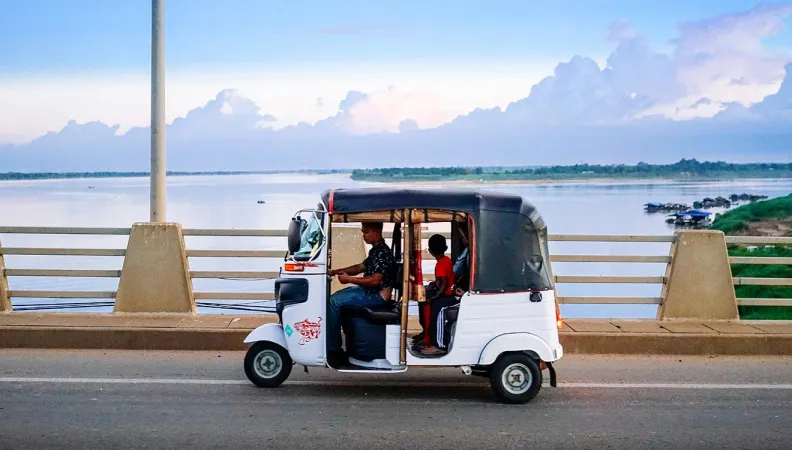 Legal notice EU (project) This project proposes a systematic analysis of the inequality-environmental change nexus in the Lower Mekong River Basin Region. It aims at building scientific base for policy action as well as identifying uninvestigated research questions. In addition, case studies on relevant fields in Vietnam, Cambodia, Laos and Thailand, representing existing or ongoing researches undertaken by the research network (WANASEA - "Strenghten the Production, Management and Outreach Capacities of Research in the Field of WAter and NAtural Resources in South-Est Asia" - and IRD) will form a collective book on the topic, together with the systematic review.
Legal notice EU (project) This project proposes a systematic analysis of the inequality-environmental change nexus in the Lower Mekong River Basin Region. It aims at building scientific base for policy action as well as identifying uninvestigated research questions. In addition, case studies on relevant fields in Vietnam, Cambodia, Laos and Thailand, representing existing or ongoing researches undertaken by the research network (WANASEA - "Strenghten the Production, Management and Outreach Capacities of Research in the Field of WAter and NAtural Resources in South-Est Asia" - and IRD) will form a collective book on the topic, together with the systematic review.
Contexte
Mekong River Basin is crucial for the livelihoods of millions of people of six countries: China, Myanmar, Lao PDR, Cambodia, Thailand, and Vietnam. The last four countries are categorized as the Lower Mekong Basin, where two thirds of the population relies on the water resources for subsistence agriculture and fisheries as well as to develop other activities such as transport and tourism. The current anthropogenic causes for environmental degradation in the region include the construction of dams, over-extraction of underground water, pollution from fast developing cities, deforestation, sand extraction, and other activities which create risks to human settlements that were even unheard of ten years ago. More often than not, the impacts of changes vary between groups of people and strongly informed by the social inequalities. Climate change adds to this ongoing environmental degradation by increasing the region’s fragility. For example, one meter of sea-level rise would cause displacement of 7 million inhabitants and flood the homes of more than 14.2 million people in the Mekong Delta.
These major anthropogenic degradations take place in a specific regional and global socio-political context. On the one hand, an accelerated rural transition has been pushed by national governments with the idea of integrating the agricultural sector into the global markets, but also under the pressure of global financial markets searching for returns in the aftermaths of the financial crisis. This rural transition occurs at a pace that fragilizes the economies when they cannot absorb the workforce in excess into the developing industrial or services sectors. In this respect, the Mekong region is a spectacular example of the economic and environmental consequences of the 2008 financial collapse on developing and emerging economies. On the other hand, the countries of the Mekong region are also subjected to the geopolitical shift putting China in the center of a new globalized system. Most of them contribute heavily to this new dynamics, which also severely impacts their environment and inequalities altogether.
For years, international and local organizations, South-East Asian governments as well as bilateral and multilateral development banks have been working to help the Mekong countries mitigate these impacts. However, the lack of a systematic review of existing knowledge in the Mekong makes it difficult to evaluate the impact of specific actions on inequalities and environmental quality. At a moment when governments (both regionally and globally) call for urgent actions, it is time to consider a systemic approach to the environment - inequality nexus in the region.
This project is part of the first phase of the Research Facility on Inequalities, coordinated by AFD and funded by the European Commission's Directorate-General for International Partnerships over the 2017-2020 period. The first phase of the Facility has led to the conduct of 22 research projects and the publication of around 100 research papers and policy briefs.
Objectif
Rising inequalities and accelerating environmental changes are two of the most significant challenges of the twenty-first century. But how do they relate to each other? Do they have common dynamic factors? This research project proposes a specific regional study on how these multidimensional variables of inequality and environmental changes relate and interact with each other. It aims at building scientific base for policy action as well as identifying uninvestigated research questions
Throughout the region, socio-economic inequalities relating to income, employment, education, access to land and other services, as well as demographic differences, such as age, gender, ethnic, and so on are more and more associated with unequal exposure to environmental risk factors. These factors can represent direct threats to people’s lives (landslides, flooding, etc.), or contribute, in an indirect way, to the degradation of agricultural land, propagation of diseases, or, more widely, health issues (air pollution, etc.). They often put already disadvantaged groups at significantly higher risk for environmental effects. Besides, the existing inequality might also contribute to the environmental changes.
Environmental risk factors considered in this project are not solely linked to global climate changes. They are also (and, for the moment, most often) the direct consequences of the growing pressure of human populations and the economic dynamics on the ecosystems. This is particularly visible throughout the Mekong River Basin. The Mekong region has been radically transformed in the last ten years by the pace and scale of large-scale land acquisitions through foreign and domestic investments leading to growing inequalities, rural unrest, and a process of simplification and commodification increasingly replacing traditional and natural systems. The spatial scope of analysis cannot thus remain purely national.
At this stage however, it seems difficult for the local or national decision maker, let alone any regional institution, to take science-based action, as long as no mapping of this scattered knowledge exists, highlighting the diverse quality of the studies, their data sources, their representativeness, the needs for further studies or on the contrary the well-established results. Scoping and systematic reviews, a technics initially coming from the field of medicine, can provide with such a dashboard instrument.
Beyond the project, an objective would be to build a research and capacities research project mobilizing the main academic and non-academic actors in the Southeast Asia region on the research directions which would have emerged from this systematic study.
Méthode
- Scoping the existing knowledge on inequalities and environmental change in the Mekong region
First, we will conduct a preliminary scoping review of the related scientific and grey literature on inequalities and environmental changes in the Lower Mekong region. The resulting literature and data repository created by the review can be of use to researchers and stakeholders interested in the topic. As such, it represents a scientific result and output that can be published in a first scientific paper. It also represents a crucial first step for the two co-implementing partners in the region, who represent a broad network of interdisciplinary researchers in the four countries of the Lower Mekong River basin, and who intend to develop broader research programs based on this scoping review.
- Building a dashboard for operational recommendations through a systematic review
Second, we will develop a systematic review. In this second step, quality filters apply, it involves data extraction as well as quantitative analysis. This step requires the work of a full time post-doc, helped by experts in the different fields represented in the scoping review, and possibly the help of documentalists from the different represented countries. It is thus crucial to be able to gather the expertise of a network of researchers and operational experts already working in the different dimensions of the subject. This is what the WANASEA network, combined with the IRD network in South-East Asia as well as experts from AFD in the region, the Mekong River Commission (MRC), the Compagnie Nationale du Rhône (CNR), the World Wildlife Fund (WWF), and the IUCN will allow to convey. This expert committee will commit to contribute a few days in the year to help the post-doctoral expert taken the right decisions in the filter of data, methods and papers.
- Integrating case studies illustrations in the general framework
As a third step of the project, we propose to develop four case-studies which would shed the light on different existing research programs which already studied some aspects of the relation between inequalities and environmental changes along the lower Mekong river basin, from Laos to Vietnam.
Résultats
The first results of the project will be presented for the international conference on “Climate impacts in South-East Asia” in Quy Nhon (Vietnam) in march 2020. They will lead two at least two research papers and a collective book.
The final results will be presented at the ASEAN Water Platform (WANASEA) in the summer 2020 in Chiang Mai University (Thailand).
Find the presentation of the research paper “Inequalities and Environmental changes in the Mekong region: a scoping review” by Huynh Thi Phuong Linh (IRD in Ha Noi) during the seventh webinar of the Research Facility on Inequalities:
You may find the research papers here:
- Displaced Sand, Displaced People: Examining the Livelihood Impacts of Sand Mining in Cambodia
- Inequalities and environmental changes in the Mekong region: A systematic mapping
You may find the policy briefs here:
Contact:
- Anda David, Research Officer, AFD
- Stéphane Lagrée, WANASEA, International Coordinator
- Alexis Drogoul, Representative of IRD Vietnam - Philippines
Find out more
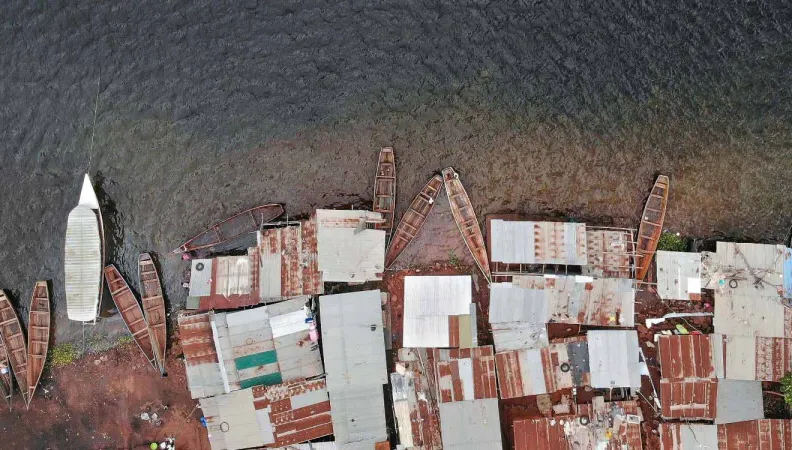 Legal notice EU (project) Climate change and variability in South East Asia (SEA) has been remarkable in the past 20 years. The peculiarity of the economy and societal structure of SEA has an impact on how these effects will be distributed across the population. This project investigated the impact of climate variability on social inequality in Vietnam and Indonesia, with the purpose of informing and influencing policy dialogues and development around issues of climate variability and social inequality.
Legal notice EU (project) Climate change and variability in South East Asia (SEA) has been remarkable in the past 20 years. The peculiarity of the economy and societal structure of SEA has an impact on how these effects will be distributed across the population. This project investigated the impact of climate variability on social inequality in Vietnam and Indonesia, with the purpose of informing and influencing policy dialogues and development around issues of climate variability and social inequality.
Context
Climate change and variability in South East Asia (SEA) has been remarkable in the past 20 years. In this study we focus on Vietnam and Indonesia, two countries that are among the fastest growing lower-middle income countries in the region. They are also among the worst affected by climate extreme in the past decades, ranking 6th and 50th in the Climate Risk Index (2017), respectively. However, their poverty and inequality patterns and trends are remarkably different. Although reducing at a significant pace, poverty in Indonesia persists at much higher rate than in Vietnam (ADB, 2019).
Inequality patterns also differ and have specific country level peculiarities that makes each of these countries an interesting case study. A recent UNESCAP report suggests that, between 1990-2014, despite the similar economic growth, inequality has been increasing steadily in Vietnam and even more in Indonesia. Finally, inequality driving factors are also quite dissimilar, with ethnicity and remoteness, and rural-urban divide and migration, being predominant factors respectively in Vietnam and Indonesia.
This project is part of the first phase of the Research Facility on Inequalities, coordinated by AFD and funded by the European Commission over the 2017-2020 period. The first phase of the Facility has led to the conduct of 22 research projects and the publication of around 100 research papers and policy briefs.
Objective
The main purpose of this study will be two-fold:
- to provide policy makers with a substantial evidence base to target social equity and equality interventions effectively
- and to strategically inform the enforcement of social protection policies that are able to capture the climate-inequality nexus while maintaining a high degree of climate and poverty sensitivity and responsiveness.
The outputs of the project will be tailored to specific national priorities in terms of climate change and inequality via the direct engagement with policy makers and local experts. Advocacy, consultations and capacity building exercises carried out throughout the project will ensure that the research will address relevant evidence gaps to inform the dialogues for climate-inequality-sensitive decision making in Vietnam and Indonesia.
Method
Using a combination of repeated cross section analysis, panel analysis, synthetic panel analysis, we will investigate the relationship between climate variability and inequality at four levels:
- average impact – national level – entire population;
- average impact – national level – entire population by deciles of income distribution;
- impact at sub-national level – population located in hot-spots - vis-à-vis average/national impact (hot spots will be identified using the comprehensive climate data and the unit of analysis defined accordingly);
- impact at sub-national level – most vulnerable groups: ethnic minority, female headed HHs, etc.
Results
The outputs have been:
- One complete research article: Who bears the burden of climate variability? A comparative analysis of the impact of weather conditions on inequality in Vietnam and Indonesia?
- One policy brief in the AFD Policy Brief Series detailing the core contributions to the literature and results of the study: Climate variability and inequality: Comparing the experiences of Indonesia and Vietnam
- Two country policy briefs in the AFD Policy Brief Series detailing for each country the most salient aspects, results and recommendations forward:
- The impact of climate variability on inequality: Evidence from Indonesia
- The impact of climate variability on inequality: Evidence from Vietnam
Two webinars based on the research paper have been organised in the CGIAR Webinar Series. These two events sought to reflect on the impacts that the current climate crisis has on the most vulnerable in Vietnam and Indonesia and to answer the following questions: Is climate variability regressive? Or better does climate variability impacts more on those who are less able to cope with its consequences? And if so, what can we do to ensure an equal, sustainable economic development for all?
- Webinar on Vietnam: watch the replay here
- Webinar on Indonesia: watch the replay here
Contact
- Cecilia Poggi, Research Officer, AFD
- Dr Grazia Pacillo
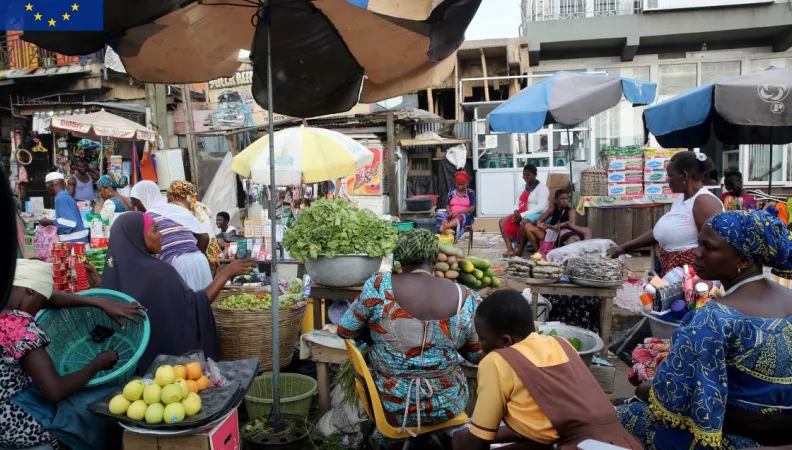 Legal notice EU (project) Led by the University of Ghana, this research project focuses on inequalities in Ghana, where they remain at important levels although this country has experienced rapid economic growth and significant reduction in poverty levels in recent times. Beyond a diagnostic study on inequality, this project analyses the changing dynamics in this country from a spatial, gender and ethnicity perspective. It also includes a focus on the relationship between economic inequalities and inequalities in education opportunities.
Legal notice EU (project) Led by the University of Ghana, this research project focuses on inequalities in Ghana, where they remain at important levels although this country has experienced rapid economic growth and significant reduction in poverty levels in recent times. Beyond a diagnostic study on inequality, this project analyses the changing dynamics in this country from a spatial, gender and ethnicity perspective. It also includes a focus on the relationship between economic inequalities and inequalities in education opportunities.
Contexte
Ghana has experienced rapid economic growth and significant reduction in poverty levels in recent times. However, the reduction in poverty has not translated into a reduction in inequality. Coloumbe and Wodon (2007), and also Cooke et al. (2016) recognise the spatial inequality that exists in the country, manifested particularly in the differences in income levels between the northern and southern parts of Ghana. Evidence by Oduro et al. (2011) and FAO (2012) also point to persistent gender inequalities relating to access to and control of assets as well as access to secured and less vulnerable employment.
According to Corak (2013), economic inequalities limit opportunities for economic and social advancement of the next generation as increased inequalities often alter the opportunities and the incentives for households to invest in the human capital development of their children.
This project is part of the first phase of the Research Facility on Inequalities, coordinated by AFD and funded by the European Commission's Directorate-General for International Partnerships over the 2017-2020 period. The first phase of the Facility has led to the conduct of 22 research projects and the publication of around 100 research papers and policy briefs.
Objectif
This project will draw on and consolidate this evidence-base and then fill some important, policy-relevant gaps that remain. By design, the research program outlined below seeks to address distributional issues in both the bottom half and the top of the distribution. The work program recognises from the outset that there are several dimensions of human development and wellbeing, and progress in some measures might be accompanied by deterioration in others. It recognises that economic growth does not necessarily lead to equitable outcomes – both poverty and inequality have self-reinforcing characteristics that are hard to counter.
Méthode
The research project will be developed across three work streams:
- The diagnostic study on inequality in Ghana will in essence aim to produce a report on inequality in Ghana. It will explore the census data and include an analysis of spatial inequality using the most recent poverty maps of Ghana. In view of this the team will be working with the Ghana Statistical Service to produce this report. This report will be based on a common framework to be developed by the hub of the ACEIR network.
- The researchers will take advantage of the two rounds of the Ghana Socioeconomic Panel Survey (GSPS) which are a result of collaboration between Yale University and ISSER. Using this data they intend to study how economic inequality has changed in Ghana over the period 2010 to 2014 (Wave 1 & 2 respectively) and what explains the changes. In particular, they will try to analyse the changing dynamics from a spatial, gender (of household head and at the individual levels) and ethnicity perspective.
- A paper on is the relationship between economic inequalities and inequalities in education opportunities in the context of Ghana. Even though enrolment rates in Ghana are generally very high, the inputs for good educational outcomes, such as the quality of school infrastructure, books and other educational materials are not equally available to pupils due to economic inequality. This in turn will have implications for educational outcomes and consequently future welfare status of these pupils as Mayer (2010) and Corak (2013) suggest. The researchers involved in this project hope to use this study to contribute to a better understanding of the nature and extent of this relationship. The study will use the two waves of the Ghana Socioeconomic Panel Survey (GSPS).
Results
Find the presentation of the research paper "Exploring the dynamics of micro- level consumption inequality in Ghana" by Nkechi Owoo (University of Ghana, ACEIR) during the sixth webinar of the Research Facility on Inequalities:
You may find the research papers and the Inequality Diagnostics here:
- Understanding the relationship between consumption inequality, inequality of opportunity and education outcomes in Ghana
- Exploring the dynamics of micro-level consumption inequality in Ghana
- Inequality Diagnostics for Ghana
Contact:
Anda David, Research Officer, AFD
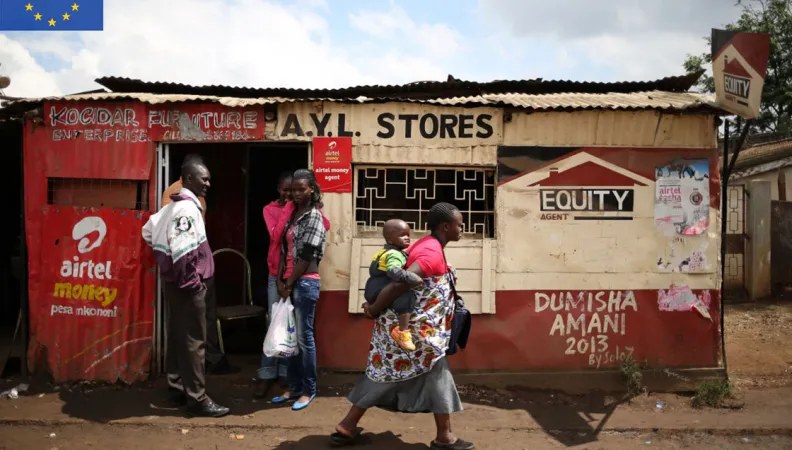 Legal notice EU (project) Although substantial progress has been made in the fight against poverty, disease, and illiteracy since independence in Kenya, a remaining challenge is linked to inequality. An understanding of inequality causes would help design and implement policies to eliminate it and avert other social problems.
Legal notice EU (project) Although substantial progress has been made in the fight against poverty, disease, and illiteracy since independence in Kenya, a remaining challenge is linked to inequality. An understanding of inequality causes would help design and implement policies to eliminate it and avert other social problems.
Contexte
Over the last twenty years, poverty has declined in Kenya. The poverty rate has fallen from 52% of the population in 1997 to 36% of the population in 2015. However, in 2015 income inequality was still large with more than half of total wealth controlled by the 20% richest of the population. An assessment of inequality causes could help design and implement policies to eliminate it. In particular, policies with well-designed redistributive fiscal components could play a substantial role in reducing income inequality.
This project is part of the first phase of the Research Facility on Inequalities, coordinated by AFD and funded by the European Commission's Directorate-General for International Partnerships over the 2017-2020 period. The first phase of the Facility has led to the conduct of 22 research projects and the publication of around 100 research papers and policy briefs.
Objectif
The proposed research program has two objectives:
- Documentation of inequality and poverty trends in Kenya since independence and diagnosis of their main drivers;
- Assessment of the impact of fiscal policies on inequalities in Kenya.
Méthode
First, the Kenyan National Household Budget Surveys will be used to analyse poverty and inequality trends over a long period of time. These datasets will also be used to assess which factors perpetuate inequalities in the country.
Then, the Commitment to Equity methodology (Lustig and Higgins, 2017) will be used to conduct an in-depth assessment of the impact of fiscal policies on inequalities and poverty. It would enable to analyse who mostly pays taxes and who benefits from transfers and public spending in the country and what fiscal policy instruments have the greatest impact on inequality reduction.
Résultats
The research project will result in two research papers, as well as workshops and policy briefs to disseminate the results to policymakers.
You may find the research paper here:
- Fiscal incidence, inequality and poverty in Kenya: a CEQ assessment
- Inequality trends and diagnostics in Kenya 2020
You may find the policy briefs here:
Contact:
Hélène Ehrhart, Research Officer, AFD
Anda David, Research Officer, AFD
Professor Germano Mwabu, University of Nairobi
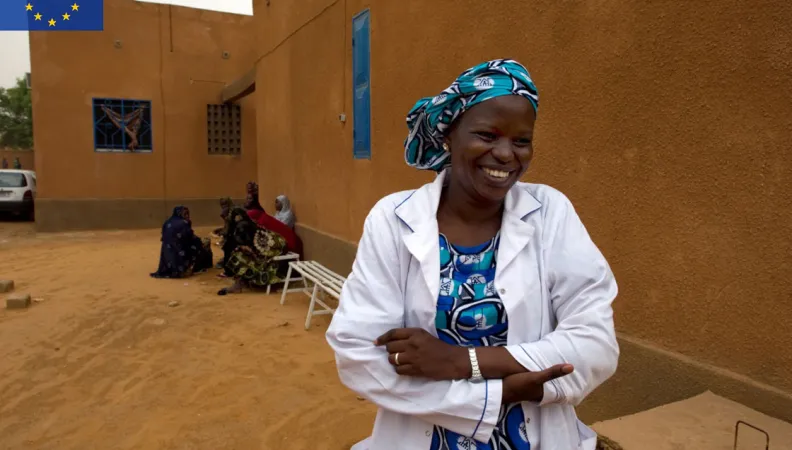 Legal notice EU (project) This research project examines the equity benefit of total health spending with particular focus on the recent Universal Health Coverage (UHC) reforms in Sub-Saharan Africa, by looking at the distributional incidence of health spending in three countries: Malawi, Zambia, and Burkina Faso. The research will shed light on the distributional incidence of total spending on health, public spending on health, and UHC-specific reform spending on health, looking both at individual beneficiaries and districts/facilities. The researchers involved in this project postulate that developing an analysis on two levels, individual beneficiaries and district/health facility, is highly innovative and can produce two parallel streams of findings, which, when pooled together, will offer a more comprehensive picture of the equitable or inequitable distributional incidence of the investments made in health.
Legal notice EU (project) This research project examines the equity benefit of total health spending with particular focus on the recent Universal Health Coverage (UHC) reforms in Sub-Saharan Africa, by looking at the distributional incidence of health spending in three countries: Malawi, Zambia, and Burkina Faso. The research will shed light on the distributional incidence of total spending on health, public spending on health, and UHC-specific reform spending on health, looking both at individual beneficiaries and districts/facilities. The researchers involved in this project postulate that developing an analysis on two levels, individual beneficiaries and district/health facility, is highly innovative and can produce two parallel streams of findings, which, when pooled together, will offer a more comprehensive picture of the equitable or inequitable distributional incidence of the investments made in health.
Contexte
The recent release of the Sustainable Development Goals reinforces the central role of health as a key element of human development, calling for further investments in health as part of a concerted effort to overcome poverty and inequalities worldwide. Specifically, SDG3 reiterates the importance of investing in policies that favor Universal Health Coverage (UHC), defined in relation to access to quality care and financial protection against the cost of illness. The urge to sustain and increase investments in health as part of an overall development policy is accompanied by the need to ensure that the investments made produce benefits for all groups in a society, contributing to reducing existing inequities in access and health status between the poor and the least poor. Evidence on the equity benefit of recent UHC reforms (ranging from user fee removal to results-based financing) is still limited. Similarly, evidence is lacking on whether investments in these recent reforms have altered spending on health at a national health, increasing the distributional incidence of this spending to benefit the poor rather than the least poor, as indicted by prior research.
This project is part of the first phase of the Research Facility on Inequalities, coordinated by AFD and funded by the European Commission's Directorate-General for International Partnerships over the 2017-2020 period. The first phase of the Facility has led to the conduct of 22 research projects and the publication of around 100 research papers and policy briefs.
Objectif
This project aims at assessing whether the distributional incidence of total and public spending on health has become more equitable over time, especially as a function of introducing UHC-specific reforms. The research objective is purposely set not only to describe the inequities in access and in health outcomes that may persist in spite of UHC-specific reforms, but also to explore more explicitly the link between the financial investments made and the benefits accrued across socio-economic groups. This choice stems from a wish to generate analytical evidence on the equity impact of the investments made in health, whether these investments are made by African countries themselves or with support from their development partners. The investigators trust that this evidence is much needed to direct and inform future investments in health. Moreover, keeping in mind this wish to inform policy making in a pragmatic manner, they plan to appraise their findings in the light of the different social and political circumstances that have shaped the emergence and implementation of the specific UHC policies and investments under analysis.
Méthode
The project expands the framework proposed by McIntyre and Ataguba published in 2011 and conducts a quasi-longitudinal benefit incidence analyses to assess the distributional incidence of total, public, and UHC-specific spending (such as user fee removal policies, targeted subsidies, or results-based financing) across all countries over time, measured both at the individual beneficiary level and at the district/health facility level. Traditionally, tables and concentration curves and indexes have been used to display the results of the Benefit Incidence Analysis (BIA). In addition to this traditional approach, the investigators plan to generate maps based on the BIA results to illustrate spatial inequities in the distributional incidence of spending on health.
Furthermore, they will appraise findings in the light of the specific circumstances within which policy decisions on health have been reached in each country, to be able to explain, from a qualitative point of view, what policy elements might have contributed to generate greater or smaller equity.
Results
You may find the research papers here:
- Estimating the distributional incidence of healthcare spending on curative health services in Sub-Saharan Africa: Benefit incidence analysis in Burkina Faso, Malawi and Zambia
- Estimating the distributional incidence of healthcare spending on maternal health services in Sub-Saharan Africa: Benefit incidence analysis in Burkina Faso, Malawi, and Zambia
- Distributional effects of healthcare spending : lessons from Burkina Faso, Malawi, and Zambia
- Assessing inequalities in healthcare spending in Burkina Faso, Malawi, and Zambia: data and methods
- Inequalities in Maternal Healthcare spending: Evidence from Burkina Faso
- Inequalities in healthcare spending on curative services: evidence from Burkina Faso
- Inequalities in maternal healthcare spending: evidence from Zambia
- Inequalities in healthcare spending on curative services: evidence from Zambia
- Inequalities in maternal healthcare spending: evidence from Malawi
- Inequalities in healthcare spending on curative services: evidence from Malawi
Contact:
Cecilia Poggi, Research Officer, AFD
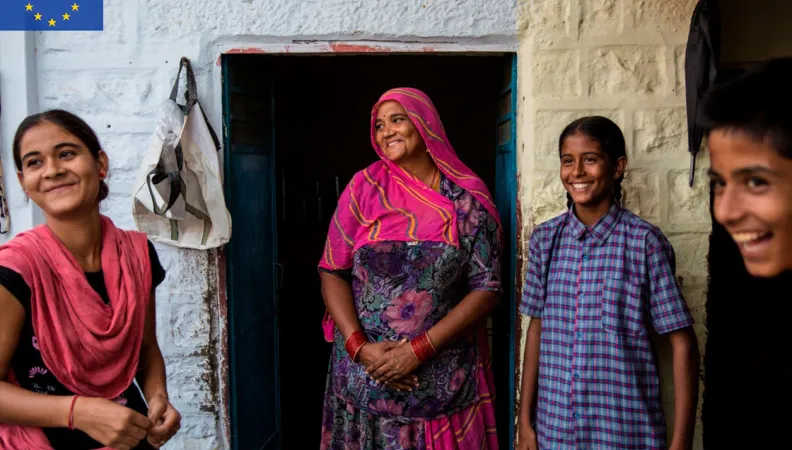 Legal notice EU (project) The project aims to establish the causal impact of three large-scale social-protection schemes in India, Ethiopia and Peru on both the level of economic resources and a number of dimensions of inequalities. The researchers involved in this project use a novel longitudinal dataset to carry out comparative analysis of these phenomena and draw conclusions that are relevant for other countries with similar circumstances.
Legal notice EU (project) The project aims to establish the causal impact of three large-scale social-protection schemes in India, Ethiopia and Peru on both the level of economic resources and a number of dimensions of inequalities. The researchers involved in this project use a novel longitudinal dataset to carry out comparative analysis of these phenomena and draw conclusions that are relevant for other countries with similar circumstances.
Contexte
Social-protection schemes have become a popular form of intervention in developing countries both by governments and within the international-development community, as they are seen as a tool to combat the adverse impacts of natural and economic crises. However, the empirical evidence on the effectiveness of these programs remains mixed. Notwithstanding the wealth of interest from policy makers, donors, and researchers, there is a paucity of evidence about the distributional incidence of these programs. Existing work has often not been able to establish longer-run effects of public-works programs on poverty and inequality. In addition, there is a lack of focus on horizontal and spatial inequalities. This research project intends to fill this evidence gap.
This project is part of the first phase of the Research Facility on Inequalities, coordinated by AFD and funded by the European Commission's Directorate-General for International Partnerships over the 2017-2020 period. The first phase of the Facility has led to the conduct of 22 research projects and the publication of around 100 research papers and policy briefs.
Objectif
This research project proposes to investigate the distributional impact of three large-scale social-protection schemes - the Productive Safety Net Program (PSNP) in Ethiopia, the Mahatma Gandhi National Rural Employment Guarantee Scheme (NREGS) in India, and the Juntos conditional cash-transfer program in Peru. These programs were chosen because they are large-scale projects involving a coordinated effort by governments, donors, local authorities and individual households. The programs cover three countries with diverse social, cultural, political, and economic contexts from which to draw lessons for future policy initiatives.
The researchers propose to go beyond measuring the direct intended impacts of the programs and rather focus on their indirect, and not necessarily intended, consequences. In particular, they first consider the effect of these programs on the income and wealth of program participant households over both the shorter- and longer-run. They then turn to the programs’ impact on horizontal and spatial inequalities, as well as their effect on household social relations and the distribution of resources within households.
Méthode
Unlike traditional benefit-incidence studies, the researchers exploit policy differences across time and space, both within and across the countries, to provide causal estimates of the social-policy impacts. They use the Young Lives cohort study that collected data both pre-and post-program implementation between 2002 and 2014 in all three countries. They exploit a number of aspects of the Young Lives cohort study and the roll-out of the social-protection schemes in each country to produce estimates that deal with non-random program placement.
The researchers planned to begin by conducting an individual-specific pre- and post-program comparison of income and wealth. Then to exploit the staggered rollout of the social-protection programs across districts to causally identify the impact of the schemes on a set of indicators. They intend to compare changes in districts that received the program earlier to changes in districts that received the program later in a difference-in-differences approach. Last but not least, they will further assess the impact of the program on individual outcomes, taking advantage of administrative boundaries to separate treated and control areas in a geographic regression discontinuity.
Results
You may find the research papers here :
- Social protection and inequality: Evidence from Ethiopia, India and Peru
- Social protection and multidimensional poverty: Lessons from Ethiopia, India and Peru
- Social protection and intrahousehold resource allocation: Evidence from three large-scale programs
You may find the policy briefs here:
- Policy Dialogues No. 1 | Social Protection: The Impact on Inequality in Ethiopia, India, and Peru
- Policy Dialogues No. 2 | Social Protection: The Impact on Multidimensional Poverty in Ethiopia, India, and Peru
- Policy Dialogues No. 3 | Social protection: impact on household resource allocation and child undernutrition
Contact:
Conchita d’Ambrosio, Professor of Economics, Université du Luxembourg
Cecilia Poggi, Research Officer, AFD
Find out more
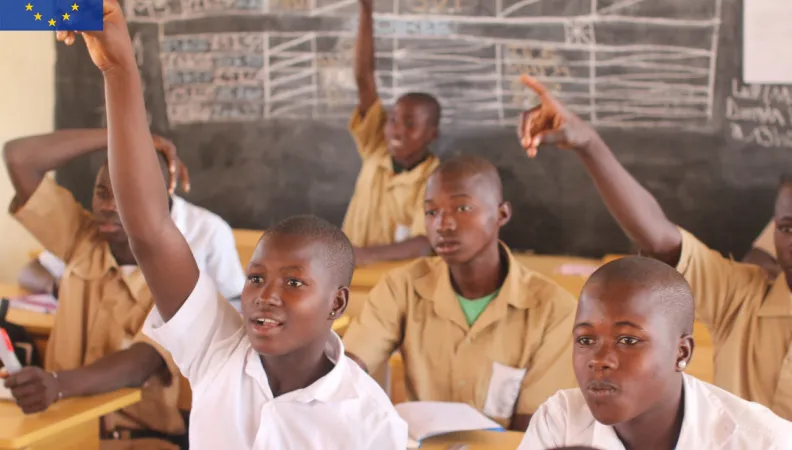 Legal notice EU (project) While the Ivorian economy is experiencing a definite upturn, there is hardly any decline in the level of poverty and inequalities. This research program has been included in the Strategic Dialog Memorandum between the Ministry of Planning and Development and AFD, to look for ways and mechanisms that may help lower the level of inequalities. Its aim is to take stock of the inequalities in Côte d'Ivoire and especially to examine the impacts of shocks, access to basic services, and public policies.
Legal notice EU (project) While the Ivorian economy is experiencing a definite upturn, there is hardly any decline in the level of poverty and inequalities. This research program has been included in the Strategic Dialog Memorandum between the Ministry of Planning and Development and AFD, to look for ways and mechanisms that may help lower the level of inequalities. Its aim is to take stock of the inequalities in Côte d'Ivoire and especially to examine the impacts of shocks, access to basic services, and public policies.
Context
An upturn in growth in Côte d'Ivoire since 2012 has been observed, with average growth rates in real GDP surpassing 8%. However, this renewed vitality in the economy has not yet been felt by all of Ivorian society. The level of poverty remains high (46.3%), as does that of inequalities. (The Gini index for 2015 is estimated at 0.402 by the National Statistics Institute and 0.415 by the World Bank). We can thus see that, while the Ivorian economy seems to be doing well, a very large proportion of its population is excluded from the benefits of this economic upturn.
This project is part of the first phase of the Research Facility on Inequalities, coordinated by AFD and funded by the European Commission's Directorate-General for International Partnerships over the 2017-2020 period. The first phase of the Facility has led to the conduct of 22 research projects and the publication of around 100 research papers and policy briefs.
Goal
This research program on inequalities in Côte d’Ivoire will first take stock of the inequalities there, and then it will carry out scientific studies on three themes:
- the impact of shocks on inequalities;
- the inequalities of access to education and to quality health services;
- the impacts of public policies on inequalities.
The study will also focus on the perception of inequalities by Ivorians.
Method
The research on inequalities will take stock of the Ivorian situation and will review the initiatives of public authorities to fight monetary and non-monetary inequalities. Using the data available on the living conditions of the households, the main indicators for the measurement of inequalities will be calculated and a representation of the spatial distribution of the inequalities will be carried out in the form of maps. Subsequently, an analysis will be carried out on inequalities in opportunities (measured by the effect on opportunities from parents’ education, their occupation, place of birth, and gender) with regard to access to property and assets, as well as on the sources and the perceptions of these inequalities.
The study on the shocks will be based on statistical analysis and modeling methods (in particular, a linear regression model and a panel data model will be applied). Access to basic services will be covered mainly with the help of micro-econometric models. The study of the effects of public policies will be considered with a microsimulated inter-industry model, then by impact evaluation models.
Results
The project is expected to produce a review describing the state of public interventions designed to eradicate inequalities in Côte d'Ivoire. The study on the perception of inequalities will also make it possible to measure the extent to which households are conscious of the need for greater social justice and identify possible measures at the individual level. This research will also help identify the mechanisms of intergenerational transmission of inequalities and will propose policy measures for social mobility in Côte d'Ivoire.
This research will give rise to conferences and workshops. Various publications are also expected: a report, policy briefs, and research articles.
You may find the report and the research papers linked to this project here (in French) :
- Etat des lieux des inégalités en Côte d'Ivoire
- D'où proviennent les inégalités en Côte d'Ivoire?
- Analyse de l'impact de la crise de 2002 sur les inégalités en Côte d'Ivoire
- Impacts des dépenses publiques sur les inégalités en Côte d'Ivoire: le cas des secteurs sociaux
You may find the policy briefs linked to this projet here (in French) :
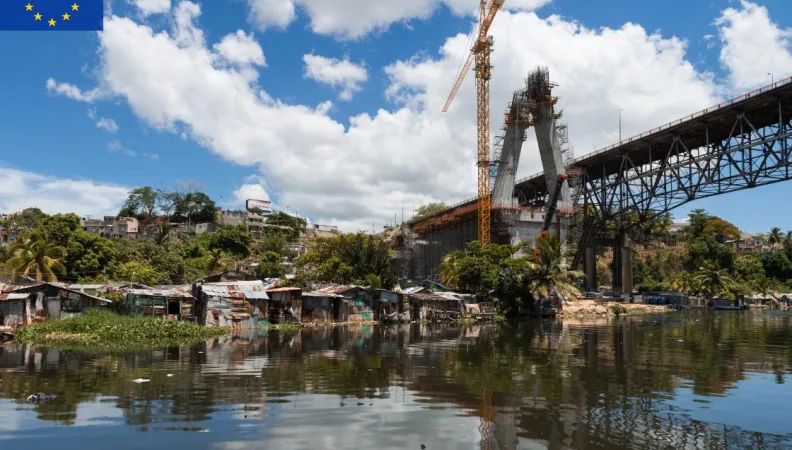 Legal notice EU (project) AFD, AECID and Oxfam are committed to reverse rising inequality in order to reduce poverty in a significant and lasting manner through a human right approach. The research process will conduct a regional analysis, in west Africa and Central America, of the multidimensional inequality based on an innovative inequality framework which is being developed by Oxfam. The study will focus as well on the impact on inequality of a sample of public policies implemented in the regions in the last decade.
Legal notice EU (project) AFD, AECID and Oxfam are committed to reverse rising inequality in order to reduce poverty in a significant and lasting manner through a human right approach. The research process will conduct a regional analysis, in west Africa and Central America, of the multidimensional inequality based on an innovative inequality framework which is being developed by Oxfam. The study will focus as well on the impact on inequality of a sample of public policies implemented in the regions in the last decade.
Contexte
The world has seen a significant reduction in the extreme poverty levels in the past decades, led by strong economic growth from emerging economies. Despite the economic growth, the incomes of the poorest people all over the world are not keeping up. Eight out of ten people in developing countries live in nations where the income of the bottom 40% has grown slower than the rest of the economy (Hoy & Samman, 2015) and 7 out of 10 people live in a country where inequality has risen in the last 30 years.
Regarding Latin American and the Caribbean, although the region achieved considerable success in reducing extreme poverty over the last decade, its still-high levels of income and wealth inequality have damaged sustainable growth and social inclusion.
In West Africa, the sub-region had the largest average economic growth at 6.2 percent between 2010 and 2014 among Africa's regions, and compared with 4.4 percent for Africa during the period. However, there is growing concern that the benefits of this impressive growth have not been inclusive and equitably shared. The combination of high economic growth and stubbornly high income inequality rates remains a puzzle.
This project is part of a European facility for a research program on inequalities in developing and emerging countries which is coordinated by the AFD. Financed by the Development Cooperation Instrument of the European Union, this facility enables to implement 20 research projects over the period 2017-2020, in partnership with donors and research centers from the South to the North.
This project is part of the first phase of the Research Facility on Inequalities, coordinated by AFD and funded by the European Commission's Directorate-General for International Partnerships over the 2017-2020 period. The first phase of the Facility has led to the conduct of 22 research projects and the publication of around 100 research papers and policy briefs.
Objectif
Even if we know less unequal societies are desirable given their beneficial economic, social and political outcomes, there is still uncertainty on which are the best routes to understand and tackle inequalities through a multidimensional perspective. To contribute to this global conversation on inequalities, Oxfam, the International Inequalities Institute at the London School of Economics and the School of Oriental and African Studies of the University of London, are joining efforts to develop a conceptual and measurement framework on inequalities. The purpose of the framework is to provide analysts and practitioners with a theoretically-grounded means by which to gain a clear understanding of the nature of inequality and to use this information to develop and devise effective policy responses with the long-term goal of reducing inequalities, tackling deprivation and improving well-being.
Méthode
The framework is designed to capture the multidimensional nature of inequality, which is experienced across a number of 7 life domains, and given that there are many different forms of inequality (such as concentrations of wealth, pay gaps, dispersion of income, social gradients in mortality, and greater social isolation experienced by the elderly). The framework is based on Amartya Sen's capability approach. The focus of this approach is an assessment on what life we lead and what we can or cannot do, and can or cannot be; the quality of life that individuals are able to achieve. Equally important, this framework should enlighten the discussion on inequalities in a way that allows for context-specific diagnosis and policy recommendations, so that it can support the strategic work of practitioners and key stakeholders of the development arena.
See this project's 2 minutes pitch from Ana Claver, Project Manager on Inequalities at Oxfam Intermón:
Résultats
Evidence from more than 150 countries, rich and poor alike, spanning more than 30 years, shows that overall, investment in health, education and social protection reduces inequality. Nevertheless, we still need to know more about what are the concrete mechanisms that make these inequality reductions happen, and how certain policies should be designed so that they tackle spatial, gender and ethnic inequalities in an effective manner. We expect to draw lessons from those different scenarios by this comparative research.
The researchers involved in this project anticipate that active citizenship is a means to achieve development, because it enables women and men living in poverty to raise their voice in defence of their rights (health, education, jobs, dignity). Moreover, they presuppose that public policies amplify their effectiveness when citizens are involved in their cycle. They also presume that women and girls plus youth are the groups especially impacted by multidimensional inequality and thus, they should be carefully considered in the research.
Find the presentation of the research paper "Multidimensional inequality in Western Africa" by Ana Claver Muñoz and Cristina Rovira Izquierdo, project manager on inequalities and inequality programme advisor at Oxfam Intermón during the fifth webinar of the Research Facility on Inequalities:
You may find the deliverables linked to this project here:
West Africa Report:
- Analysis of multidimensional inequalities in West Africa and a strategy for inequality reduction (in English)
Central America and Dominican Republic Report:
- Analysis of multidimensional inequalities in Central America and Dominican Republic, and a strategy for inequality reduction (in English)
Policy briefs:
- A strategy for reducing inequalities in West Africa (in English)
- A strategy for reducing inequalities in Central America and the Dominican Republic (in English)
You may also find a short presentation video of the Multidimension Inequality Framework (MIF) used in this research project (in English):
Contact:
Anda David, Research Officer, AFD
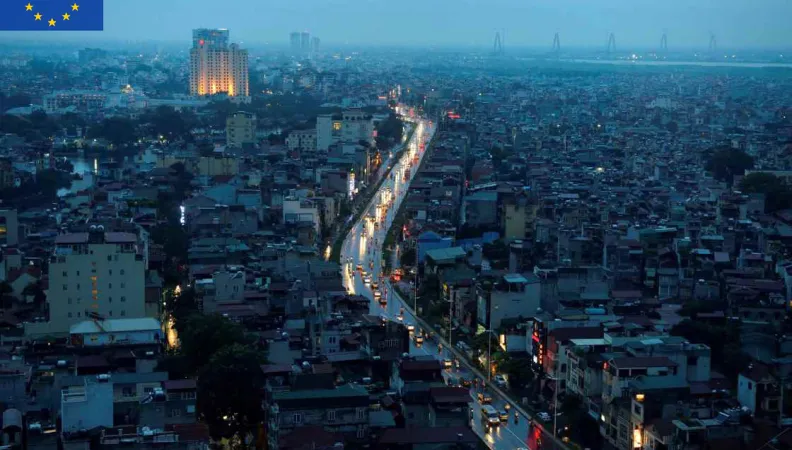 Legal notice EU (project) This project seeks to contribute to the goals of the research facility on inequalities through the analysis of multidimensional inequalities in Vietnam. The project will address the following key questions: What are the most relevant inequalities in Vietnam? What are the most critical inequality drivers ? What policies should national government prioritize to foster inequality reduction?
Legal notice EU (project) This project seeks to contribute to the goals of the research facility on inequalities through the analysis of multidimensional inequalities in Vietnam. The project will address the following key questions: What are the most relevant inequalities in Vietnam? What are the most critical inequality drivers ? What policies should national government prioritize to foster inequality reduction?This project also originally focused on the analysis of inequalities in Burkina Faso. However, this project has been suspended.
Contexte
Despite a significant progress in Vietnam in terms of growth, poverty reduction and even inequality reduction, efforts on inequality and human development issues still need to be done.
In Vietnam, nearly 30 million people have been lifted above the official poverty line over the last three decades, and the country's human development index (HDI) has risen significantly. However, data shows that income inequality in Vietnam has increased over the last two decades. According to the World Bank, the Gini index rose from 35.7 to 38.7 from 1992 to 2012. Besides, in 2014, there were 210 super-rich individuals in the country whose combined wealth stood around $20bn, which is equivalent to 12% of the country's GDP. In fact, according to Oxfam-Vietnam calculations, the richest man in Vietnam earns more in a day than the poorest Vietnamese earns in 10 years.
This project is part of the first phase of the Research Facility on Inequalities, coordinated by AFD and funded by the European Commission's Directorate-General for International Partnerships over the 2017-2020 period. The first phase of the Facility has led to the conduct of 22 research projects and the publication of around 100 research papers and policy briefs.
Objectif
The goal is to adopt a multidimensional approach to provide convincing analysis on inequality. This will focus especially on inequality of opportunities and voice in order to use this as a process to engage with relevant stakeholders, especially in the debates on policy options to tackle inequality, and in mid-term to use the MIF as a way to influence monitoring of SDG 10 in the country.
The specific goals are as follows:
- The "Oxfam Vietnam Inequality Framework" is developed, piloted and adopted to the Vietnamese context;
- The OVIF is used as a tool to enhance in-depth understanding on multiple dimensions of inequality (paying special attention to inequality in voices and opportunity) and identify concrete policy gaps to tackle inequality in Vietnam;
The OVIF research findings and methodology are shared with policy makers, research institutes, and other development institutions.
Méthode
The Multidimensional Inequality Framework is designed to capture the multidimensional nature of inequality, which is experienced across a number of 7 life domains, and that there are many different forms of inequality (such as concentrations of wealth, pay gaps, dispersion of income, social gradients in mortality, and greater social isolation experienced by the elderly). Within each of the 7 life domains, the framework offers a series of sub-domains and a number of indicators and measures which can be used to measure and monitor multidimensional inequality in a given context. Many of the indicators and measures suggested under each subdomain are related to the SDGs framework, which governments are already committed to monitor. This can be a useful element to guarantee at least a minimum level of data availability in all countries. Besides, the Oxfam Inequality Toolkit, which is a key companion for the practical implementation of the MIF in a given context, suggests several global databases, aside from national household surveys, to be used by teams willing to implement the framework.
Résultats
The research findings point at persisting, critical inequalities across several life domains. After conducting quantitative and qualitative analysis, the research identifies large gaps between subpopulation groups across spatial, socio-economic, and ethnic axes of inequality in their capability to enjoy the right to a proper, quality education and to experience a life free of illness and access to quality healthcare facilities. People belonging to ethnic minorities (EM), women, and people living in rural provinces are more affected by inequalities in health and education than the Kihn, men, and higher-income households living in predominantly urban areas.
Furthermore, inequality in the capability to participate, raise one’s voice, and influence public matters is extremely acute between men and women and the poorest households, with a lower level of education, compared to the richest, urban, highly educated households.
You may find the research paper and the policy brief here:
- Research paper: Multidimensional inequality in Vietnam
- Policy brief: Multidimensional inequality in Vietnam
Please find the presentation of the report "Multidimensional Inequalities in Vietnam” by Vu Thi Quynh Hoa (Head of Campaign & Advocacy in Oxfam Vietnam) and Dr. Phuong Duc Tung (Director of the Mekong Development Research Institute) during the second webinar of the AFD Research Conversations:
Contact:
- Anda David, Research Officer, AFD
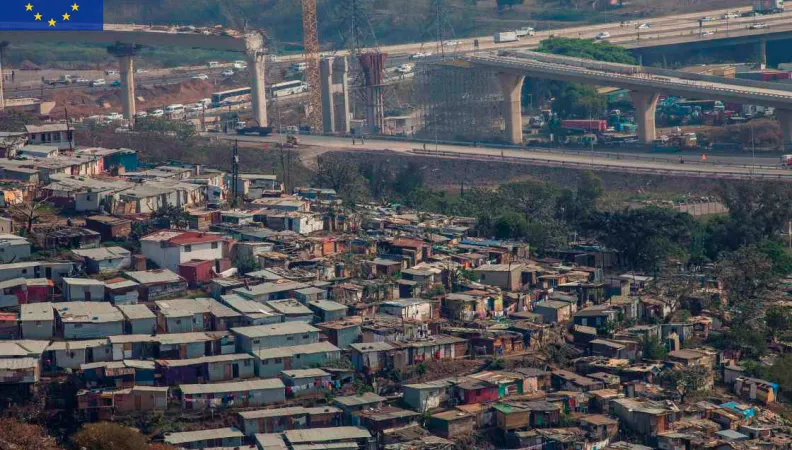 Legal notice EU (project) Inequality has emerged as the social challenge of the decade. Empirically, a series of influential studies of the available international evidence suggest that global inequality has been falling in the last quarter century. However, this encouraging trend appears to have been driven entirely by convergence in GDP per capita across nations and the consequent decline in inequality between countries, with the average inequality within countries remaining constant until the about 2000 but increasing thereafter.
Legal notice EU (project) Inequality has emerged as the social challenge of the decade. Empirically, a series of influential studies of the available international evidence suggest that global inequality has been falling in the last quarter century. However, this encouraging trend appears to have been driven entirely by convergence in GDP per capita across nations and the consequent decline in inequality between countries, with the average inequality within countries remaining constant until the about 2000 but increasing thereafter.
Context
The picture within Africa is more complex, and often obscured by problems with unreliable and non-comparable data, both over time and across countries. The most careful African data analysis suggests that, measured in monetary terms, African inequality is very high, Africa being the most unequal continent. There is, however, huge variation in the magnitude, changes and texture of this inequality across the continent.
This implies a double danger. Africa first needs to ensure that it is included in the international measurements. At least as importantly, the continent must also ensure that the particular contexts of its societies are considered in the analysis both of the factors causing inequality and the consequences of inequality. This analysis is absolutely crucial because it is the basis for policy interventions and civil society action, which are necessary to reverse the trend.
Given this context, a research project focusing on the development of diagnostic tools and capacity building was launched in partnership with the African Center of Excellence on Inequality Research (ACEIR) in the framework of the first phase of the Research Facility on Inequalities. The initial study (2018-2020) led to an in-depth analysis of inequalities in four countries: South Africa, Ghana, Kenya and Cote d’Ivoire. A Handbook on Inequality Measurement, which serves as a foundational guide for multidimensional inequality analysis, was also developed by ACEIR. The Handbook outlines key dimensions and indicators of inequality and provides guildelines for measuring income and beyond income inequalities.
This project was part of the first phase of the Research Facility on Inequalities, coordinated by AFD and funded by the European Commission's Directorate-General for International Partnerships over the 2017-2020 period. The first phase of the Facility has led to the conduct of 22 research projects and the publication of around 100 research papers and policy briefs.
Following the success of this research project:
- A fifth analysis was launched in Mozambique over the 2022-2024 period;
- A research project aming to expand and update the Handbook by incorporating methodologies for assessing vulnerabilities related to climate change and ecological transitions has also been launched over the 2024-2025 period.
Find out more
Goals
The main objective of this research project was to advance the analysis of African inequality and the policy discussion on strategies to overcome inequality in Africa through a series of country-level engagements. The project was given structure and impetus through the development of a diagnostic tool that was implemented in a limited number of pilot countries. This diagnostic tool consists of a thorough analysis of the various inequalities in a given country which enables the government to identify the priorities and policy options in order to reduce them.
In order to build the diagnostic tool, a Handbook was also developed to set up a common base which enabled country comparisons. To extend its use and improve accountability, it was backed with a central data hub and strong data centres in each partner country that allowed and facilitated further inequality analysis.
Existing multidimensional inequality analyses primarily concentrate on examining inequalities within the social and economic domains. While many low-income countries are severely impacted by climate change, there is a notable research gap in the analysis of inequalities related to climate vulnerabilities and their interactions with other socio-economic and environmental factors. The extension and updating of the Handbook, carried out over the period 2024-2025, aims to address this gap and provide the guidelines for integrating the analysis of climate-related inequalities in future diagnostics.
Method
The diagnostic tool is based on three pillars :
- a conceptual and empirical review of the studies on inequality in Africa, allowing us to have a baseline for the development of future projects, as well as a better comprehension of the specificities of inequalities in Africa and of their measurement;
- a Handbook which contains the framework proposed for the country inequality diagnostics, the methodological issues around the measurement of inequalities and their analysis and the important issues linked to policies;
- the support to the implementation of the country diagnostic, in collaboration with the pilot countries’ local research teams and the creation of the data hub.
In order to expand and update the Handbook, researchers will thoroughly examine and synthesise existing literature that addresses the measurement and analysis of climate-related vulnerabilities. This approach will help identify gaps in current research and propose a minimal set of indicators for measuring vulnerabilities linked to climate change and the imperatives of the ecological transition and detail appropriate data and measurement methods to enable their inclusion as part of an inequality diagnostic report.
Results
In practical terms, the country diagnostic takes the form of a report which overviews the inequality within a country, across all relevant dimensions, for a given time and over time. Alongside this, it summarises the main policies passed, or in place, expected to have an impact on inequalities. Each country will use their diagnostic as a platform:
- for policy engagements on strategies to overcome inequality,
- for the stimulation of national dialogue and a national research focus on inequality,
- to lead the national discussion through further, high impact research papers from the country node on inequality.
- The Handbook on Inequality Measurements for Country Studies: in order to insure a certain degree of comparability among all the country studies and to support researchers and statisticians in conducting inequality diagnostics, a Handbook was developed by the African Centre of Excellence for Inequality Research (ACEIR).
- A review on inequality in Sub-Saharan Africa: this research paper takes stock of what we know about African inequality both to promote better analysis and better policymaking in addressing inequality in Africa.
- The diagnostic of inequality in South Africa, carried out by Statistics South Africa in partnership with the Southern Africa Labour and Development Research Unit (SALDRU), ACEIR in the EU-AFD Facility framework: Inequality trends in South Africa: a multidimensional diagnosis of inequality
This report was presented at a workshop involving all actors working to reduce inequality (11 February 2020 in Philippi, Cape Town), on the occasion of the 30th anniversary of the release of Nelson Mandela. You will find here the synthesis of the workshop here: Stakeholder engagement on inequality trends in South Africa.
- The diagnostic of inequality in Ghana, conducted by ISSER and the University of Ghana in partnership with the ACEIR in the EU-AFD Facility framework: Inequality Diagnostics for Ghana
- The diagnostic of inequality in Kenya, conducted by University of Nairobi in partnership with ACEIR in the EU-AFD Facility framework: Inequality Diagnostics for Kenya
- An in-depth analysis of inequality in Côte d'Ivoire (in French)
- An analysis on the dynamics of social inequalities in Mozambique, conducted by Instituto de estudos sociais e economicos (IESE) and the University of Cape Town in partnership with ACEIR in the EU-AFD Facility framework
- The research project aming to expand and update the Handbook will result in:
- A research paper that conceptualizes the links between inequalities, climate change and the ecological transition in low and middle income countries (in progress);
- An updated edition of the Inequality Handbook that integrates key metrics of climate change's impact on inequality (in progress).
Contacts
- Anda David, Research Officer, AFD
- Rawane Yasser, Junior Research Officer, AFD
